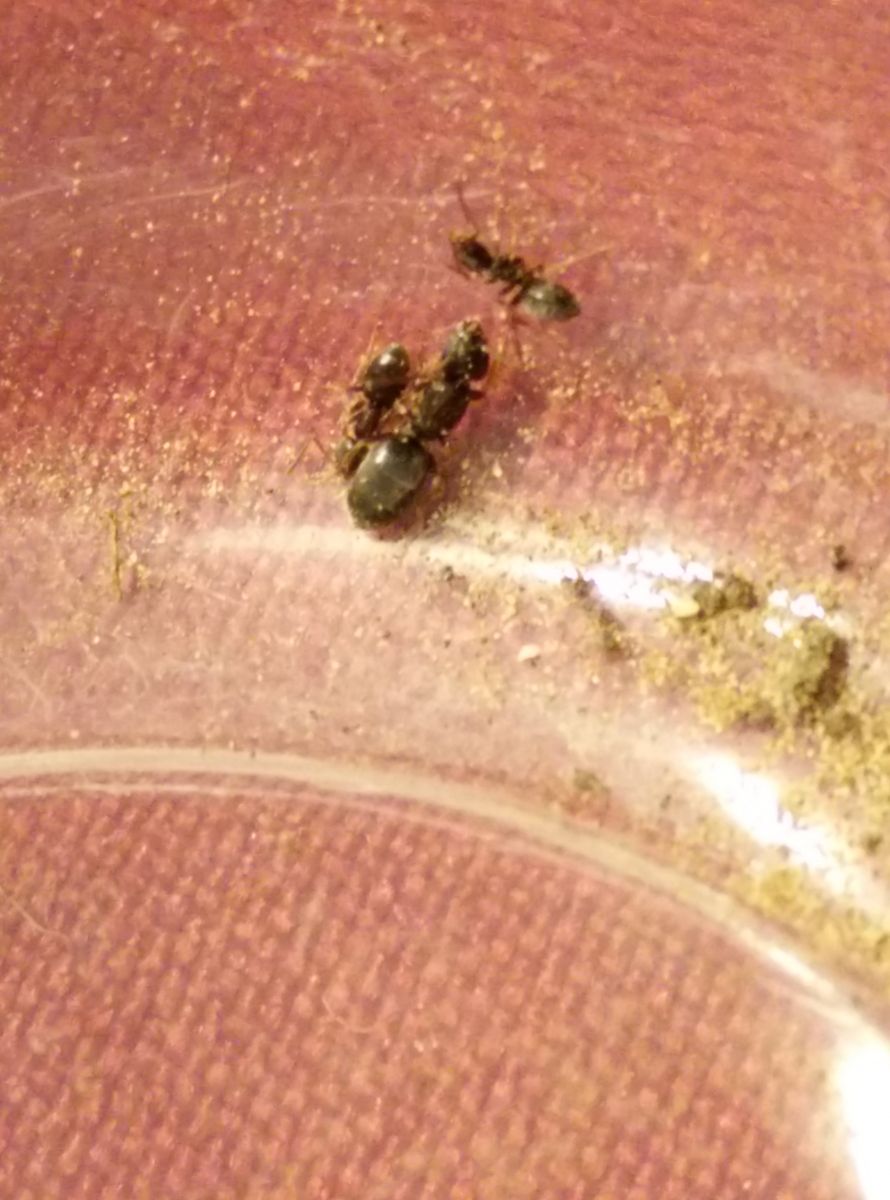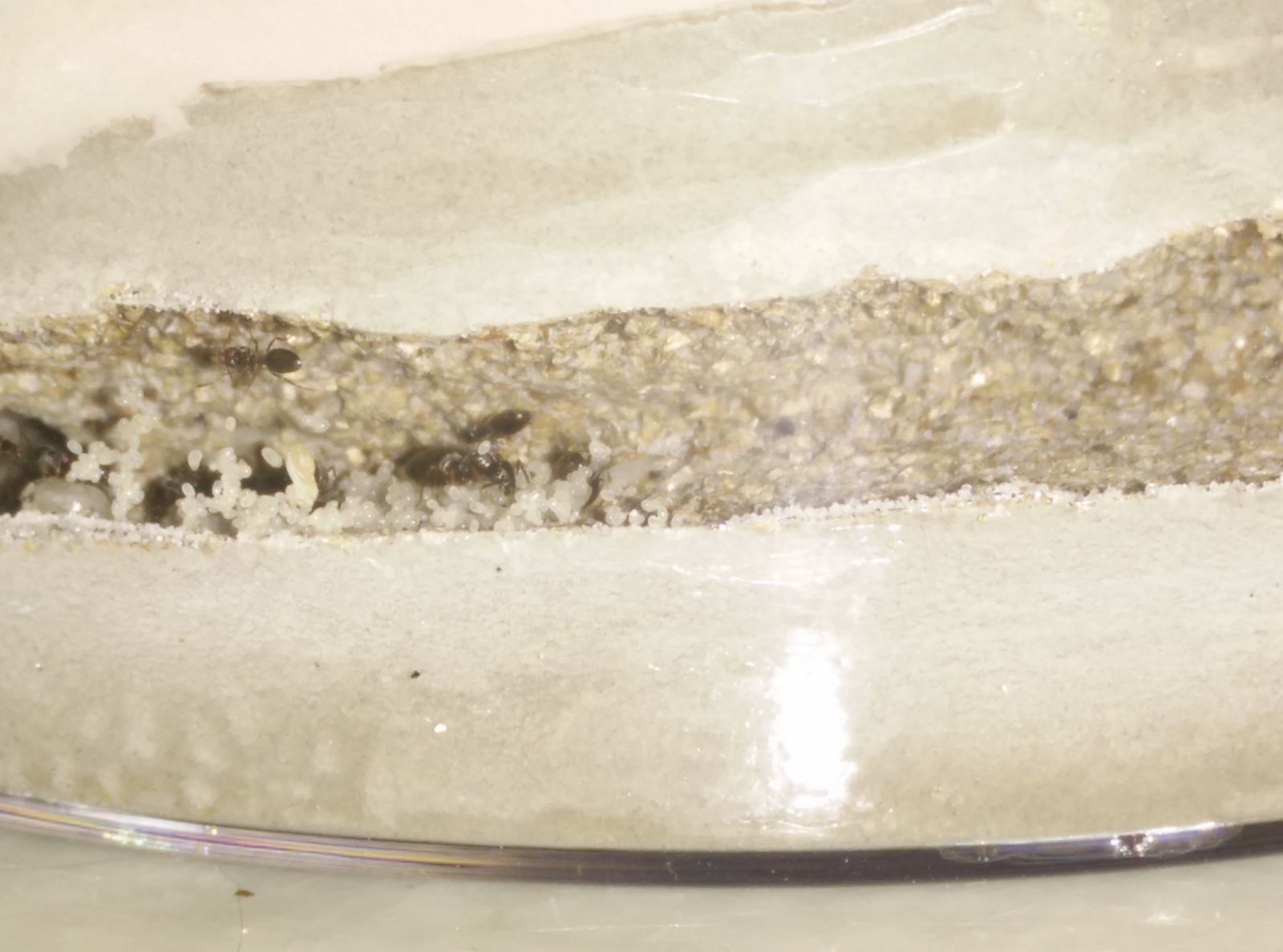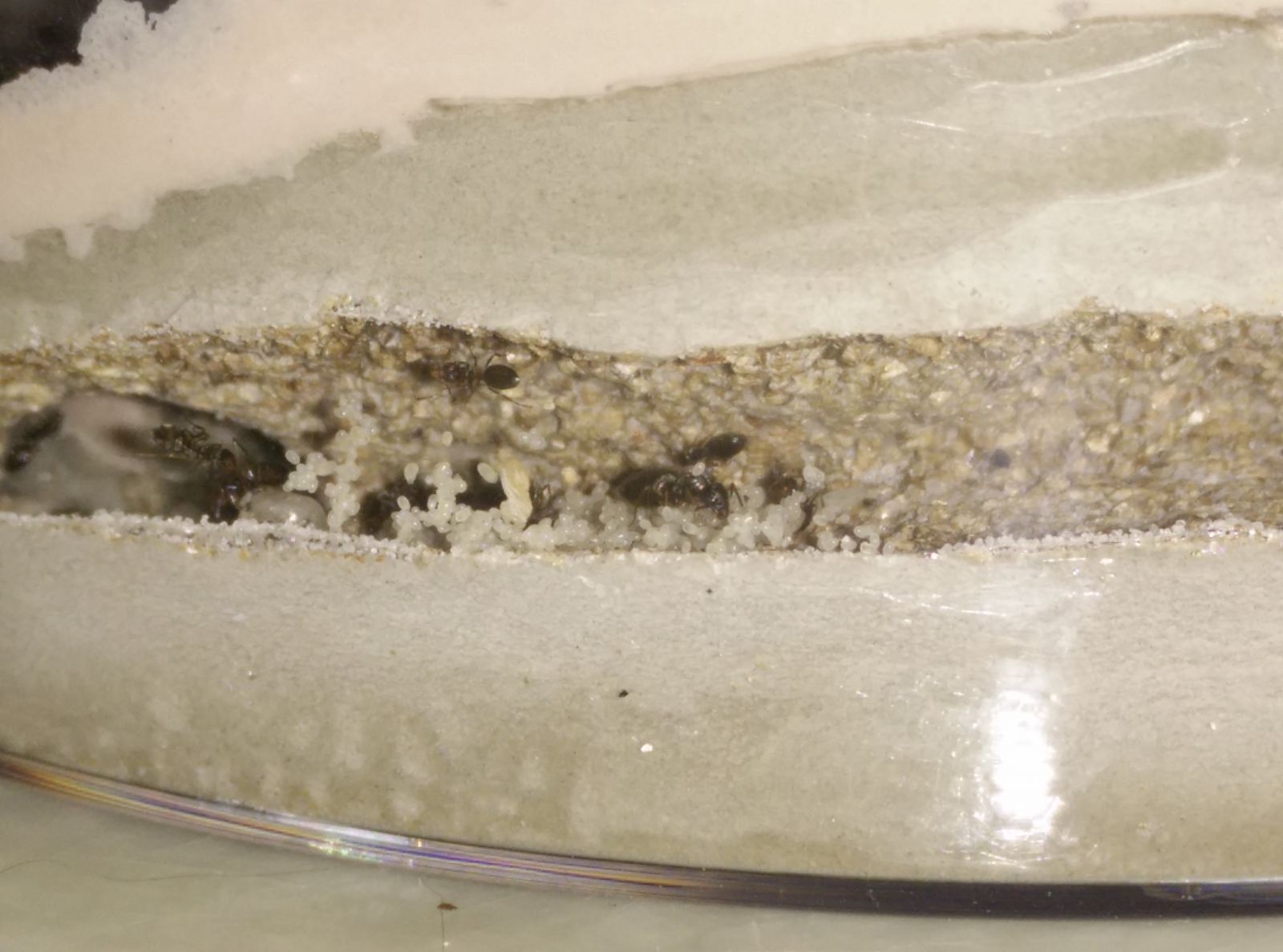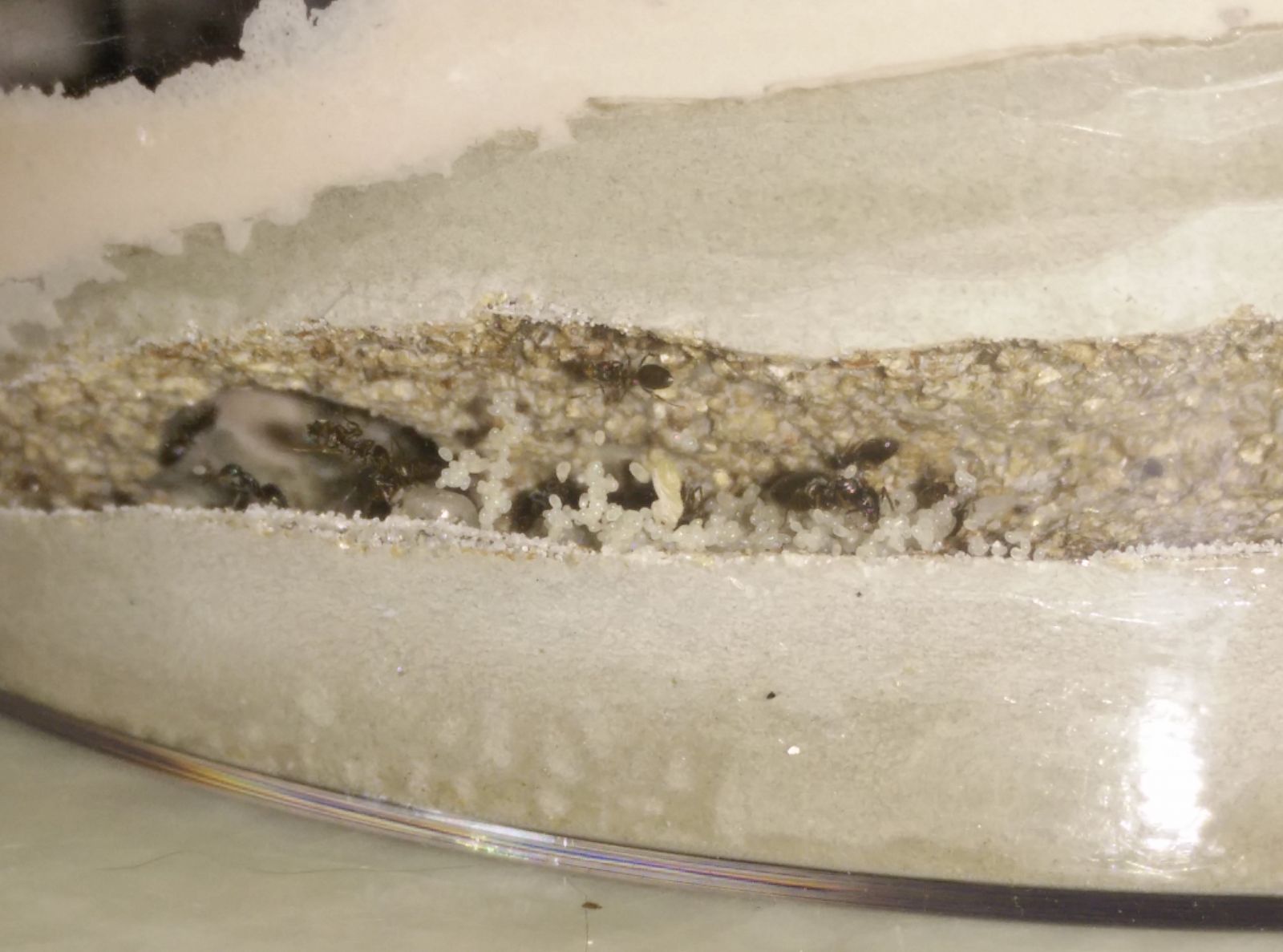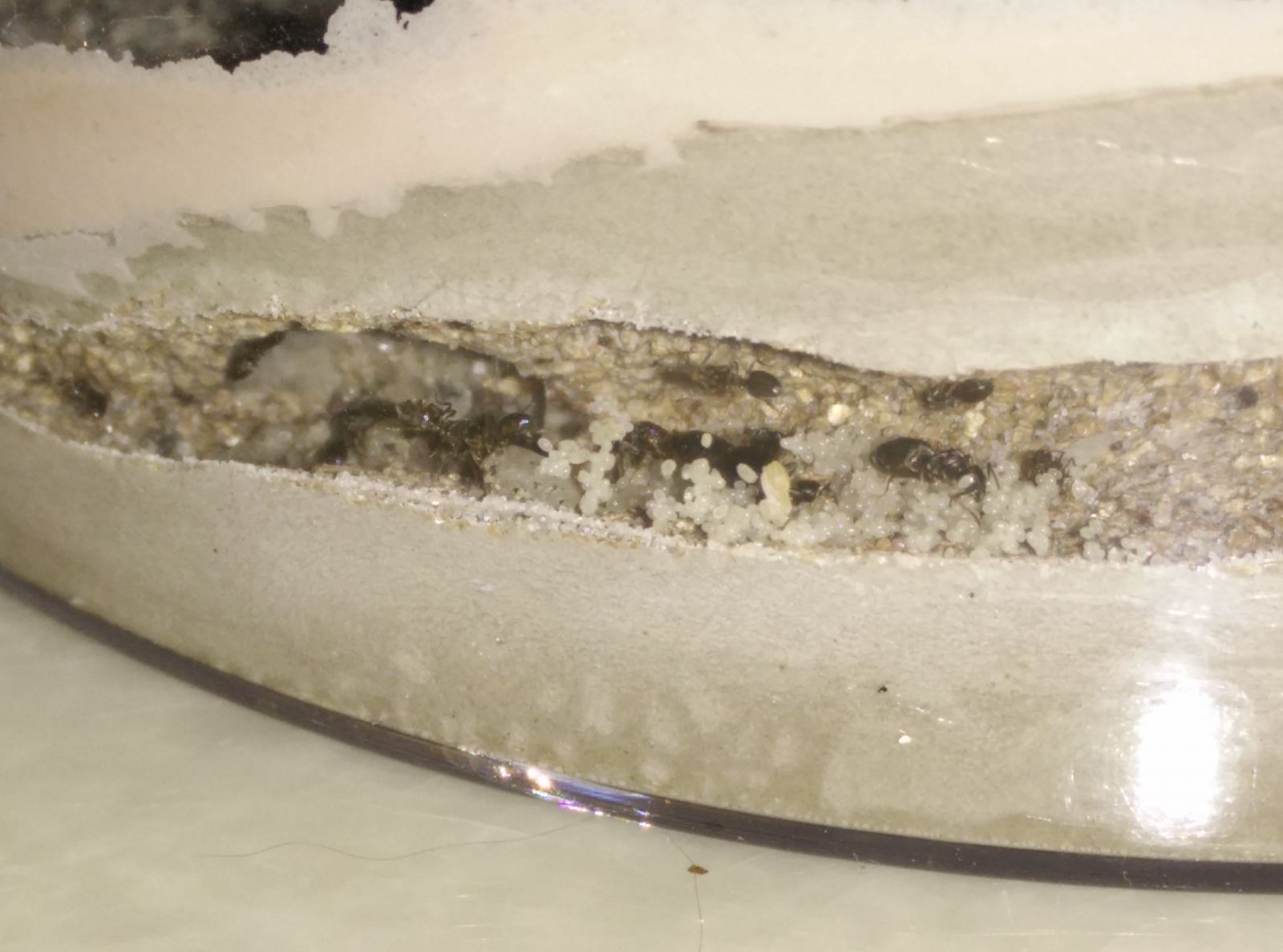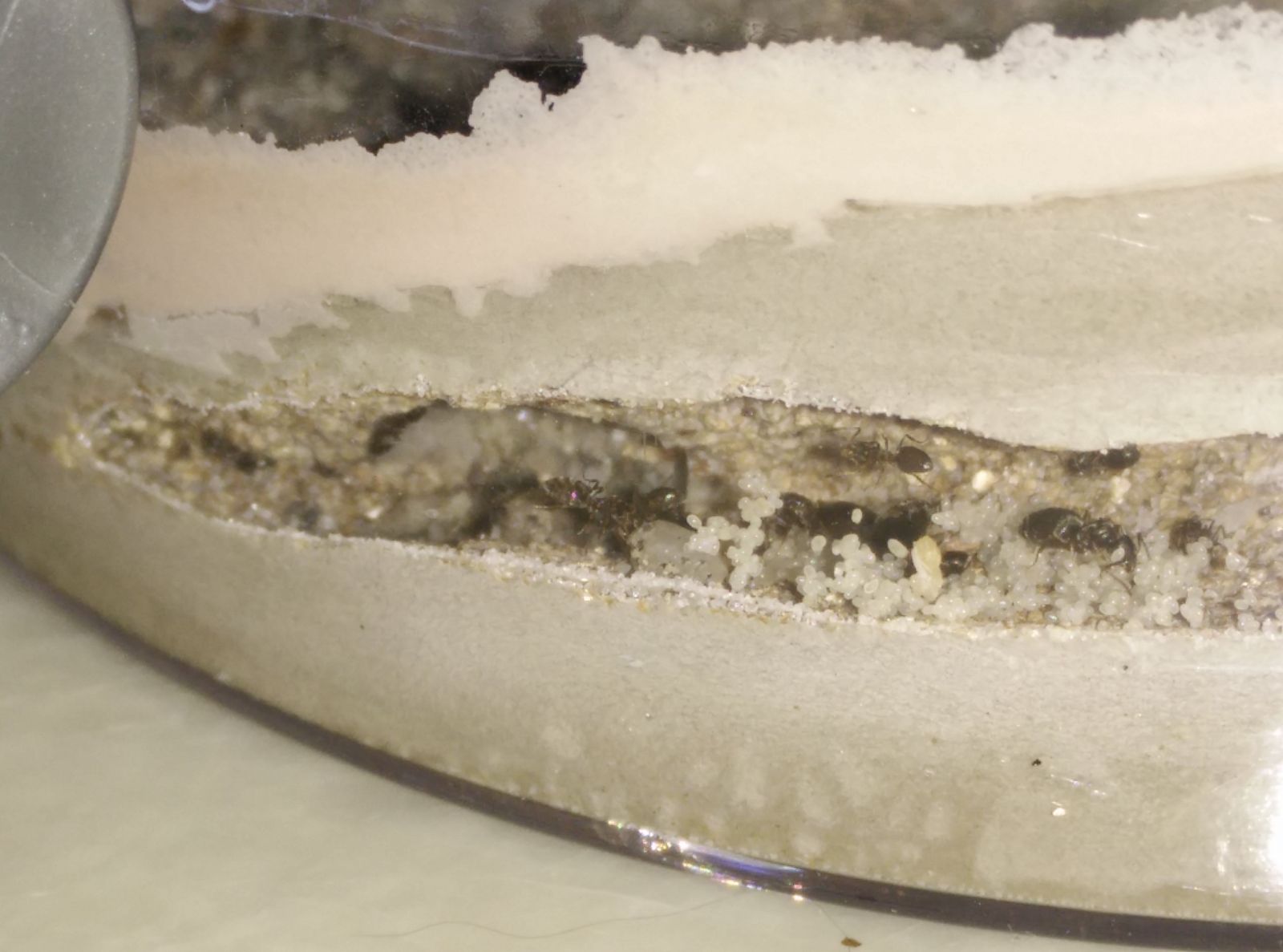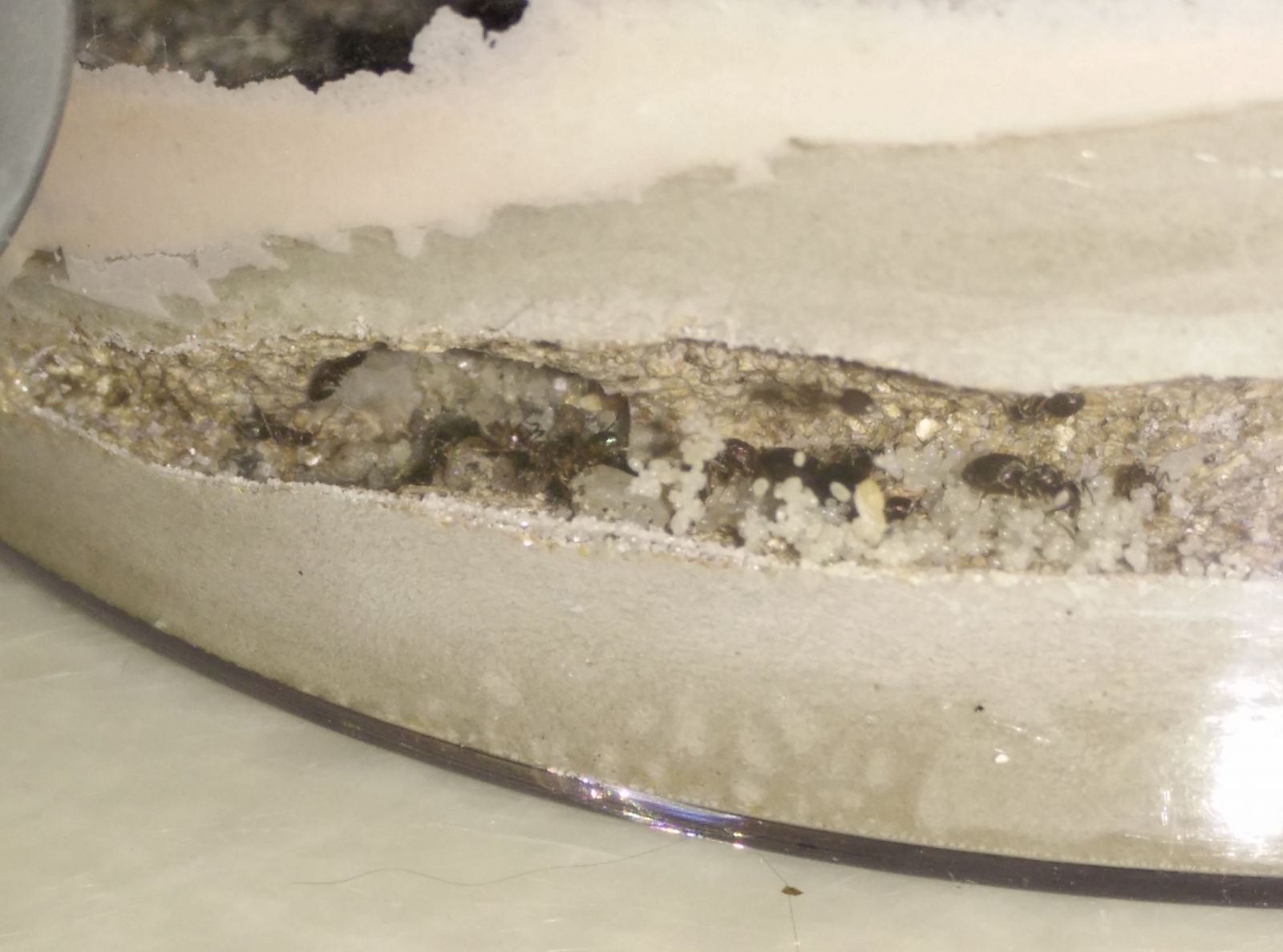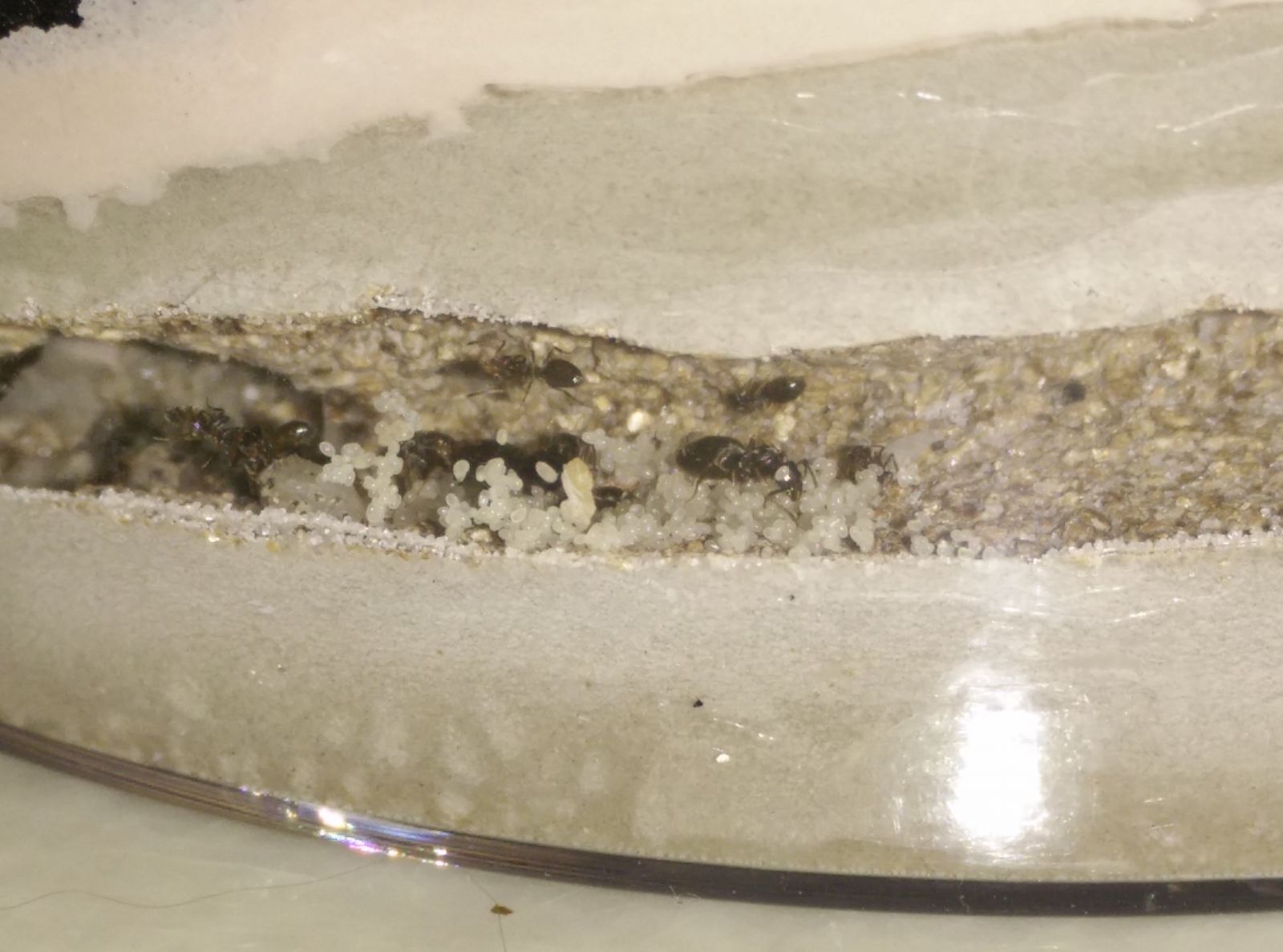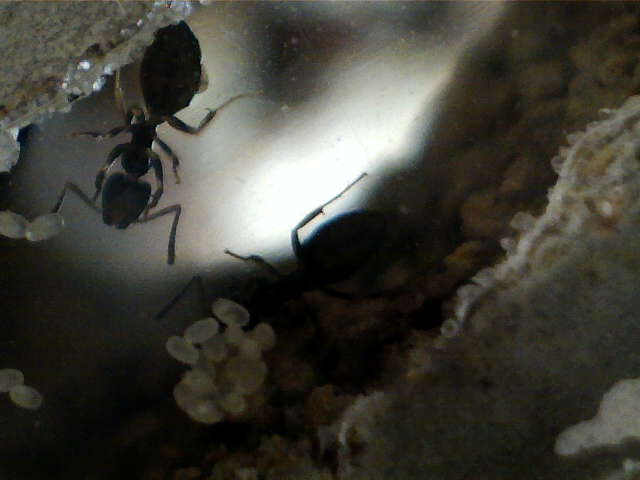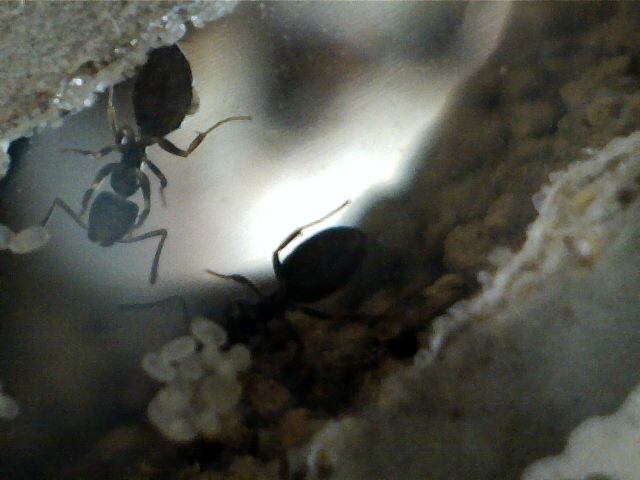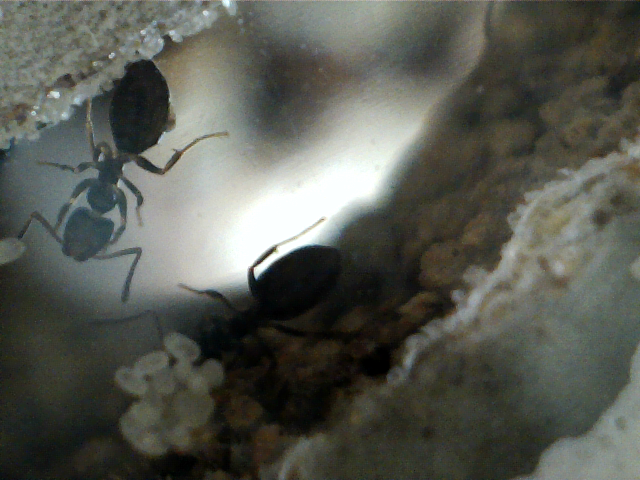Tapinoma sessile look like that too, and are very common in mountain areas. Tapinoma sessile have white colored legs like that. I doubt its the invasive ant, but heh...can't be 100%. Plus, if it was Technomyrmex albipes...I doubt they'd survive up in the mountains. As far as I know, since they also live in the humid tropical part of Florida...that tells me they wouldn't likely survive in high altitudes. If they DID, then there would be no reason they wouldn't spread past the mountains. They do look pretty similar though. I know when I sent a sample to a local Myrmecologist, thinking it was the invasive ant...it turned out just to be Tapinoma sessile which actually DO become invasive in urban areas.
I just know Tapinoma sessile I always find up in the mountains (and also lower altitudes sometimes). And Tapinoma sessile DO get up to 10 million ants in a colony, in disturbed areas (that includes if there are any solitary houses nearby which would have disturbed the land, not just in a town/village/city).
You can easily figure it out by sacrificing a worker, smashing one with your finger and see if it leaves a gross coconut-like smell behind.
Will pretty much solve the mystery. 
Also, if you have a cat or/and a dog...they go CRAZY for this "smell". All my cats go crazy and become super...well...they seem to go in heat after I've had Tapinoma sessile all over my arms/hands. They do the same for Dorymyrmex bicolor too.
And finally. Tapinoma sessile are pretty hard to keep in captivity. Mine never ate, and at first they laid tons of eggs...but, month after month they'd die off for some reason until there wasn't any left. Seems to be a lot of people's experience with them.
Edited by Vendayn, April 5 2015 - 7:14 PM.
